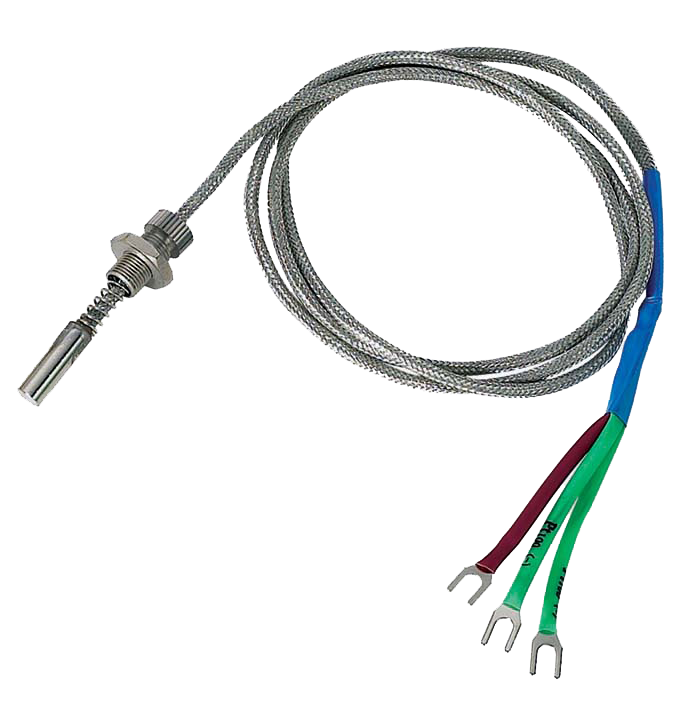Both thermocouples and thermal resistances belong to contact temperature measurement in temperature measurement. Although their functions are the same to measure the temperature of an object, their principles and characteristics are different.First of all, introduce thermocouples. Thermocouples are the most widely used temperature devices in temperature measurement. Their main characteristics are a wide range of kiss measurement, relatively stable performance, simple structure, good dynamic response, and ability to transmit 4-20mA electricity remotely. Signal, convenient for automatic control and centralized control. The principle of thermocouple temperature measurement is based on the thermoelectric effect. Connecting two different conductors or semiconductors into a closed loop, when the temperature at the two junctions are different, thermoelectric potential will be generated in the loop. This phenomenon is called the pyroelectric effect, also known as the Seebeck effect. The thermoelectric potential generated in the closed loop is composed of two kinds of electric potentials; thermoelectric potential and contact potential. Thermoelectric potential refers to the electric potential generated by the two ends of the same conductor due to different temperatures. Different conductors have different electron densities, so they generate different electric potentials. The contact potential, as the name implies, refers to when two different conductors are in contact. Because their electron densities are different, a certain amount of electron diffusion occurs. When they reach a certain equilibrium, the potential formed by the contact potential depends on the material properties of the two different conductors and the temperature of their contact points. Thermocouples currently used internationally have a standard specification. The international regulations stipulate that thermocouples are divided into eight different divisions, namely B, R, S, K, N, E, J and T. The lowest possible temperature measurement Measure minus 270 degrees Celsius, up to 1800 degrees Celsius. Among them, B, R, and S belong to the platinum series of thermocouples. Because platinum is a precious metal, they are also called precious metal thermocouples and the remaining ones are called cheap metal thermoelectrics. I. There are two types of thermocouple structures, common type and armored type. Ordinary thermocouples are generally composed of thermoelectrodes, insulating tubes, protective sleeves and junction boxes, while armored thermocouples are assembled by combining thermocouple wires, insulating materials and metal protective sleeves. A solid combination formed by stretching. However, the electrical signal of the thermocouple needs a special wire to transmit. This wire is called a compensation wire. Different thermocouples require different compensating wires, and their main function is to connect with the thermocouple to keep the reference terminal of the thermocouple away from the power supply, so that the temperature of the reference terminal is stable. Compensation wires are divided into two types: compensation type and extension type. The chemical composition of the extension wire is the same as that of the thermocouple being compensated. However, in practice, the extension wire is not made of the same material as the thermocouple. Even wires with the same electron density are replaced. The connection between the compensation wire and the thermocouple is generally very clear. The positive pole of the thermocouple is connected to the red wire of the compensation wire, and the negative pole is connected to the remaining color. Most of the general compensation wires are made of copper-nickel alloy.Next, we introduce thermal resistance. Although thermal resistance is widely used in industry, its application is limited due to its temperature measurement range. The temperature measurement principle of thermal resistance is based on the resistance value of conductor or semiconductor. The characteristic that changes with the change of temperature. It also has many advantages. It can also transmit electrical signals remotely. It has high sensitivity, strong stability, interchangeability and accuracy. However, it needs power supply and cannot instantaneously measure temperature changes. Industrial thermal resistance generally uses Pt100, Pt10, Cu50, Cu100, platinum thermal resistance generally has a temperature measurement range of minus 200-800 degrees Celsius, and copper thermal resistance is minus 40 to 140 degrees Celsius. The thermal resistance is the same as the thermocouple, but it does not require a compensation wire, and it is cheaper than a hot spot couple.
Post time: 21-09-21
